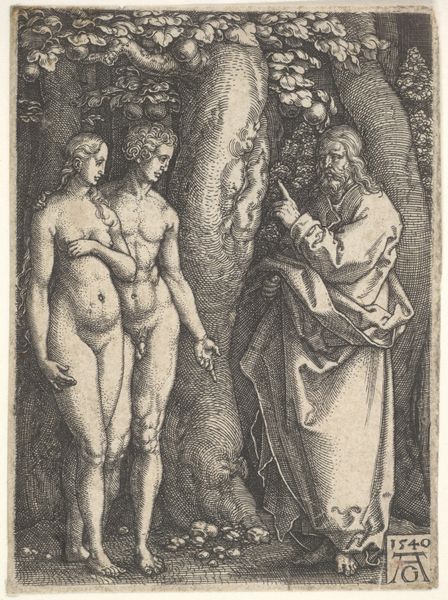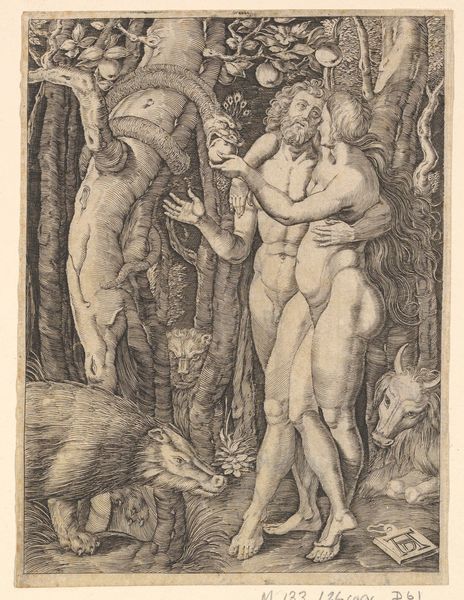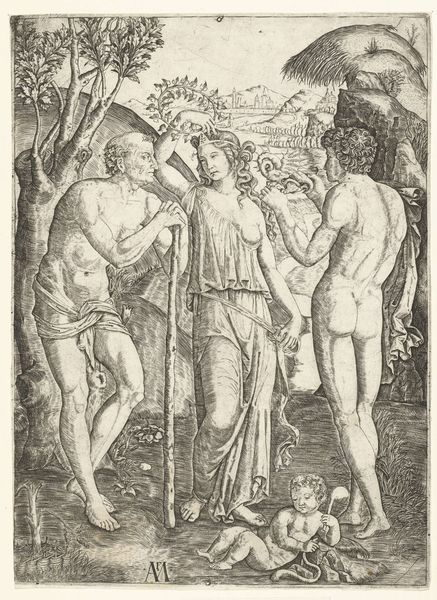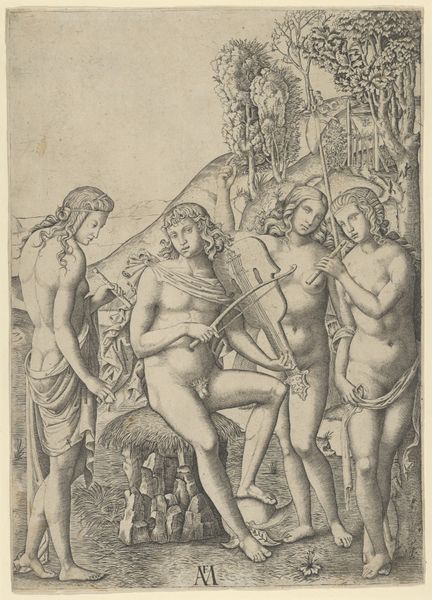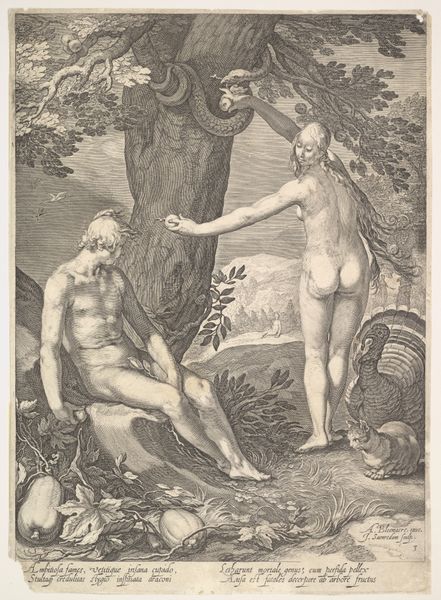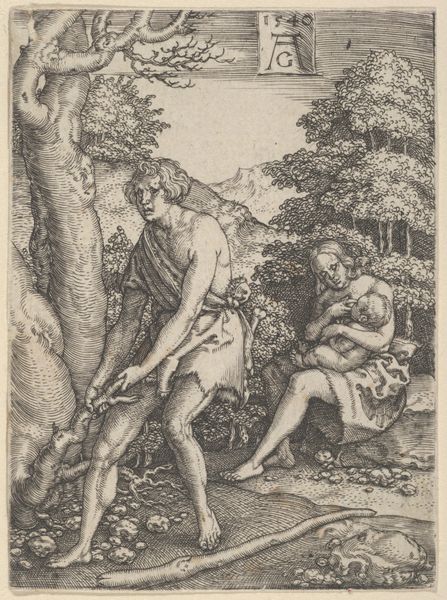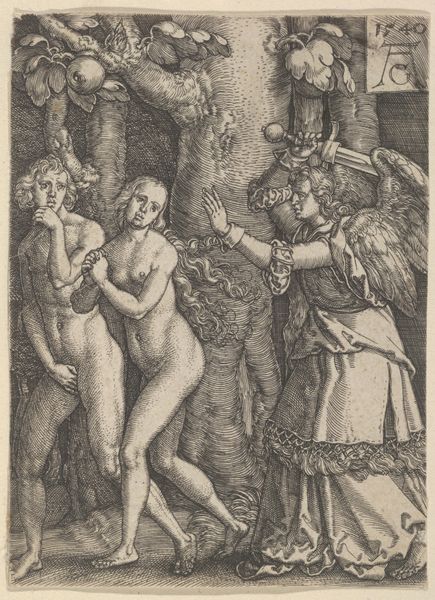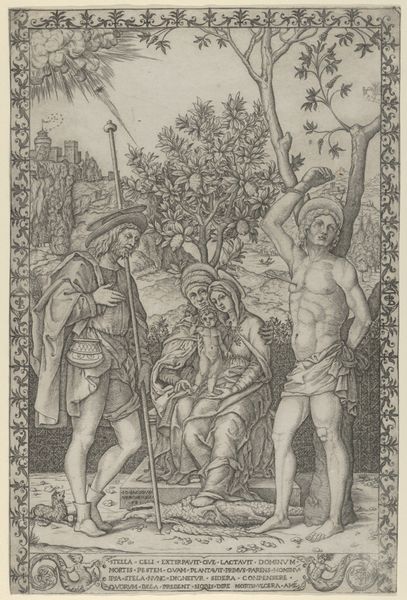
Adam and Eve Hide Themselves, from The Story of Adam and Eve 1540
0:00
0:00
drawing, print, engraving
#
drawing
#
allegory
# print
#
landscape
#
figuration
#
history-painting
#
northern-renaissance
#
engraving
Dimensions: Sheet: 3 7/16 × 2 1/2 in. (8.7 × 6.4 cm)
Copyright: Public Domain
Editor: Here we have Heinrich Aldegrever's "Adam and Eve Hide Themselves, from The Story of Adam and Eve", created in 1540. It's a black and white print, currently residing at the Metropolitan Museum of Art. The textures achieved purely through engraving are really fascinating! What do you make of the visual interplay here? Curator: The density of the lines commands immediate attention. Observe how Aldegrever utilizes varying thicknesses and densities of the engraved lines to simulate tonal variations and textures. Consider, for example, how the musculature of Adam and Eve is rendered, contrasting with the draping of God's robes. Do you perceive a visual hierarchy established by the composition? Editor: I see. God seems to be separated by his dress and clear stature difference with Adam and Eve, while they're kind of huddled together. The tree is imposing. Curator: Precisely. Notice how the imposing tree acts as a central visual element, not only dividing the pictorial space but also participating in the narrative. Semiotically, how might we interpret its gnarled presence in relation to the concept of knowledge or the fall from grace? Editor: It feels almost like it's actively hiding them, the way its branches curl around. A physical manifestation of their shame. The way the light doesn't seem to touch them furthers the feeling of being alienated. Curator: An astute observation. Further examine the posture and gesture of each figure. How do their body language and facial expressions contribute to the overall narrative? Consider, for example, the contrapposto stance of Adam in contrast to the more frontal pose of God. Editor: It seems like everyone's weight is pushing towards the center of the image, especially since the figures on the left are more outwardly emotional and less controlled than God on the right. Thanks for breaking down those details, it really clarified my perception. Curator: It has been a pleasure analyzing this composition with you. These early prints reward close study and formal analysis.
Comments
No comments
Be the first to comment and join the conversation on the ultimate creative platform.
